Green jobs, no longer just an environmental buzz phrase, represent a critical component to the progressive growth of the US economy. On February 23rd, the Department of Labor’s Employment and Training Administration (ETA) announced the availability of $40 million in green jobs development grants. The funds are authorized for the Green Jobs Innovation Fund (GJIF) and are meant to encourage the growth of the green economic sector, which includes everything from renewable energy technology and implementation, to policy and programmatic work. The announced grant will also support individual training and development within the green jobs sector to ensure interested candidates receive the proper credentials to be competitive within the green economy.
Category Archives: Green Building
Federal Efforts for Energy Efficiency
In the 2011 State of the Union Address, President Barack Obama highlighted many goals as part of the administration’s “winning the future” campaign. Energy efficiency was one such goal, and last Thursday the President, speaking at Penn State, unveiled the Better Buildings Initiative, a plan for a 20% improvement in energy efficiency in commercial buildings by 2020. It’s no coincidence the plan was reveled at Penn State, a school with more than 500 researchers working on energy and environmental studies. The President touted Penn State as a leader in the research towards a clean energy future.
The initiative also strives to reduce companies’ energy bills by $40 billion per year. The plan aims to achieve these goals through a number of different approaches, including tax incentives, loans, and challenges to turn the private sector towards the mind set that clean energy is a worthwhile investment.
In the plan, five main points are presented to achieve these goals.
- Tax incentives – A call to redesign tax code, this would create more incentives through tax breaks and credits for businesses to make energy efficiency improvements to their properties.
- More financing opportunities – Through a recent increase in loan size limits, the Small Business Administration is encouraging current lenders to promote loans made specifically for small businesses to improve the efficiency of their buildings. Also, a new pilot program is proposed in the President’s budget that will guarantee loans for improvements on hospitals, schools, and other commercial buildings.
- Promote state and local governments to encourage energy efficiency in the private sector – The President’s proposed budgets will include new competitive grants for state and municipal governments to encourage the private sector to invest in energy efficiency upgrades to commercial buildings. This is important because many codes, regulations, and standards on commercial energy efficiency are set and controlled by state and local governments.
- The Better Buildings Challenge – The President will challenge CEOs and University Presidents to become leaders in the movement of commercial building energy efficiency by making those leading the way eligible for benefits that include public recognition, technical assistance, and access to “best-practices sharing” within a network of like minded peers.
- Training the next generation of commercial building technology workers – The plan looks to provide more transparency around energy efficiency performance, and provide better training in energy auditing and building operations.
To show the government is truly behind its aspirations for energy efficiency, President Obama issued an executive order to federal agencies, directing them to achieve zero net energy by 2030. Among the requirements, all new constructions and alterations must employ high performance and sustainable design principles. As a mark of progress of this Executive Order, at least 15% of existing federal buildings must meet these principles by 2015.
As for the energy efficiency in the homes of American families, this particular plan does not touch on the subject, but it builds off of the proposed “HOMESTAR” legislation, which encouraged Americans to make energy saving upgrades to their homes. While the house passed the Home Star Energy Retrofit Act of 2010, it never came to vote in the Senate. The President says his remains committed to passing this legislation.
As 2012 approaches, President Barack Obama will be starting to campaign for reelection in the coming months. Look for energy efficiency policy to be a big part of his “winning the future” campaign unveiled during the State of the Union Address last month.
Painting The Roof of Our World White
 When we consider the many actions we may take to fight global warming and become more responsible citizens of earth, do we often think of our roofs? At most, green roofs are the topic of impassioned discussion, but other alterations aren’t mentioned or considered.
When we consider the many actions we may take to fight global warming and become more responsible citizens of earth, do we often think of our roofs? At most, green roofs are the topic of impassioned discussion, but other alterations aren’t mentioned or considered.
The discussion of altering roofs first became a heated (ha) topic in the U.S. when the U.S. Secretary of Energy, Steven Chu, a Nobel prize-winning scientist, brought the concept of white roofs to the table in 2009. He proposed that, though it may seem a silly action to suggest, if we could make all of the roofs and dark paved surfaces white, we would be able to save emissions equal to taking all the cars off of the roads for eleven years.
Using white surfaces to fight warming works because the white roofs reflect the Sun’s rays before they are absorbed; after absorption the rays are only emitted by the receiving material (e.g. a black roof, black pavement, etc.) as heat (long-wave radiation or infrared), which has a hard time getting back out through the atmosphere. The shortwave (UV) rays that the sun sends in are much more capable of penetrating the atmosphere, in both directions. As a result, the white roofs effectively send the heat back out the way it came, before it’s turned into heat!
Keith Oleson, a National Center for Atmospheric Research scientist, performed a study released in January of this year that found that white surfaces could reduce the urban heat island as much as 33% in some cities.
This concept continues to be relevant; a study came out last month that suggests that urban areas are warming at accelerated rates when compared to rural areas. The study also found that areas that have the highest potential for increased urban heat island effects, have the most potential for increased populations within the next 50 years, meaning more people in smaller spaces, including many without access to air conditioning. While daytime temperatures may warm equally, the nights in urban areas are expected to grow much warmer, resulting in a smaller difference between day and night temperatures as global warming accelerates; city residents will say goodbye to the relief of a cool night after a sweltering sunny day. Since this is expected to be a significant and near-future impact, several actions were suggested within the study, including usage of green spaces, strategic architecture, and white roofs.
Additionally, the aspect of home heating comes into play. Dr. Chu insisted that the white roofs not only reflect sunlight to keep homes cool in the summer, but that they would actually reflect heat back into homes in the winter, effectively reducing costs (and emissions) in both seasons. This was disputed by Keith Oleson, who suggests that in winter, the effects of white roofs would be the same, cooling by reflection. This conclusion illustrates the point that the world is not uniform; white roofs may be a perfect tactic for urban areas in locations that do not experience cold, but perhaps a less ideal choice for locations with less-than-mild winter months.
Here’s a video of Secretary Chu’s explanation that is posted on the US Department of Energy’s official YouTube page (also a great source for high quality video of the oil leaking into the Gulf of Mexico, presently…).
Ultimate Re-Use: Storage Container Buildings
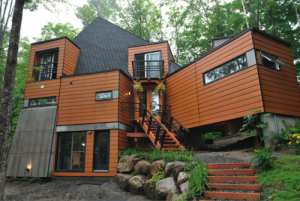 A new type of architecture has been infiltrating the traditional world for years; homes, condominiums, offices, and all other manner of buildings are being built from industrial storage containers that we would normally see on the back of an 18-wheeler or a shipping barge. The containers are easily stacked, and work quite well for the inhabitants once they are properly insulated, and turned into homes.
A new type of architecture has been infiltrating the traditional world for years; homes, condominiums, offices, and all other manner of buildings are being built from industrial storage containers that we would normally see on the back of an 18-wheeler or a shipping barge. The containers are easily stacked, and work quite well for the inhabitants once they are properly insulated, and turned into homes.
These new structures are subtly environmentally-friendly, in the most obvious way. We are all familiar with the chant “Reduce, re-use, recycle,” and this type of construction is a legitimate way of re-using the excess industrial storage containers that are finished with their initial use.
Shipping container architecture has been around for several years, but this topic presently comes to light again because the American firm Lot-EK, once again, takes it to a new level. 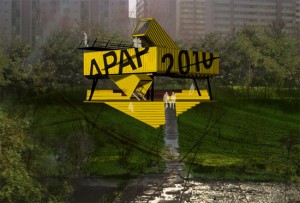
Their soon-to-be constructed Anyang Public Art Project (APAP) Open Art school in Korea has made news, and that’s not surprising at all upon taking a look. This is a project meant to engage the local community with its open structure, including an amphitheater layout, leading down to the river it is set along. The building will feature offices, open galleries, open meeting space, as well as work space for researchers; as has been the trend with these buildings, the non-traditional shape takes nothing away from the functionality of the new structure. These structures are a method of waste-management that results in beautification and functionality wherever they are planted: The ultimate re-use!
Coming soon? Bipolar roofs
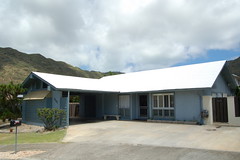 You might be familiar with cool roofs, the idea of using a bright-colored or reflective roofing material to reduce heat absorption. This has the dual effects of both cutting down on the urban heat-island effect as well as reducing a building’s solar gain and the attendant cooling load. Alas, a disadvantage of such a roof (especially in northern climes) is the loss of an extra boost from a warm dark roof in the winter. Therefore researchers have been working on a means of eating ones cake and having it too.
You might be familiar with cool roofs, the idea of using a bright-colored or reflective roofing material to reduce heat absorption. This has the dual effects of both cutting down on the urban heat-island effect as well as reducing a building’s solar gain and the attendant cooling load. Alas, a disadvantage of such a roof (especially in northern climes) is the loss of an extra boost from a warm dark roof in the winter. Therefore researchers have been working on a means of eating ones cake and having it too.
Last fall an MIT startup announced that they had developed a color-changing tile dubbed Thermeleon. More recently, a New York firm announced a different, simpler material that could compete with your neighbor’s biodiesel-fueled car for used fry oil.
Stretch Code Passes in Cambridge
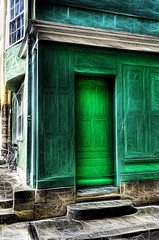 After a series of public hearings, the Cambridge City Council adopted the stretch energy code on December 21st. The stretch code is about 30% more efficient than the baseline building code and has different requirements for both the residential and commercial sectors. Visit the city’s website to learn more about the stretch code, which includes a summary table that outlines the new requirements.
After a series of public hearings, the Cambridge City Council adopted the stretch energy code on December 21st. The stretch code is about 30% more efficient than the baseline building code and has different requirements for both the residential and commercial sectors. Visit the city’s website to learn more about the stretch code, which includes a summary table that outlines the new requirements.
By passing the stretch energy code, the city of Cambridge demonstrates its continued commitment to reduce its carbon footprint, by requiring higher efficiency standards for buildings, which produce 80% of all carbon emissions in the city. In addition, the city of Cambridge has now met one of the requirements of the Green Communities Act, that may provide grant funding for efficiency and renewable energy initiatives.
The stretch code is not without controversy, as expressed in the E2.0 July blog post. The city council weighed in feedback from the community and received recommendations for the code’s adoption from the Climate Protection Action Committee and the city’s Green Building Task Force. The new building code will go into effect on July 1, 2010.
Greening Government
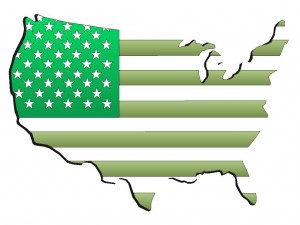 On Monday, as another step in leading by example, the Obama administration initiated a government-wide suggestion box for ideas to green the executive branch. For two weeks federal employees will have the opportunity to submit and vote on ideas which will then be referred to committee.
On Monday, as another step in leading by example, the Obama administration initiated a government-wide suggestion box for ideas to green the executive branch. For two weeks federal employees will have the opportunity to submit and vote on ideas which will then be referred to committee.
The existing suggestions are available for perusal on GreenGov at right, below the video. They include (many copies) of the usual suspects, like occupation sensors for lights or double-sided printing, as well as gems such as:
Replace grass lawns that require mowing with wild flowers that do not. This will save on pollution from lawn mowers. —Kris, Bethesda
Good idea. That should also cut down on run-off and water used for irrigation, as well as providing useful habitat for wildlife Kris.
There are also disappointing revelations like:
Many employees have mini refrigerators to keep their lunch cold. Each one uses around $30 per year worth of electricity. We could encourage people to share and eliminate the extra ones by charging a fee of $20 per year for a refrigerator permit. —Carl, NIH
Why aren’t there communal (high-efficiency) fridges in the first place? They’re a standard fixture in most offices…
Building a House on your property? That’s so 20th Century!
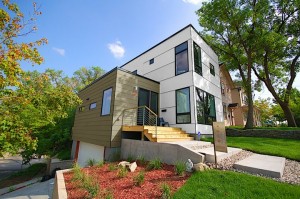 If any of our readers have the opportunity to build on a vacant lot, we recommend they visit this page at the Jetson Green website.
If any of our readers have the opportunity to build on a vacant lot, we recommend they visit this page at the Jetson Green website.
This week, they are featuring a story on David Schmit, a Minneapolis photographer who decided he wanted a home in the suburbs with the design features of his downtown rental loft. After some investigation Schmit found a company called Hive Modular that supplies prefab homes. Actually prefab home parts which are then shipped, assembled and fitted out on site.
If you’re thinking trailer home, make sure you scroll down to view some of the interior shots of Schmit’s home after it was finished and furnished.
If you want to read the whole story behind the approval, construction and siting of the house, visit the Midwest Home website.
Anyone still reading this article probably wants to know the green angle. Even though the owner originally chose Hive Modular becasue they could provide a loft-like space on his suburban lot, the construction of these homes off-site means many efficiencies in material usage are realized. Low cost per square foot construction leaves money on the table for incorporating other sustainable living features. Schmit chose locally harvested woods and pre-installed insulation to keep heating costs as low as possible during the long Minnesota winters.
It’s easy to see how other energy efficiency technology could also be incorporated into this home-from solar panels on the flat roof to Energy Star double glazed windows that will help maintain the house envelope temperature all year long.
White Roofs Everywhere!

Want to know a quick, relatively easy way to reduce global climate change? Paint your rooftops white. Yes, it’s true.The way rooftops—as well as roadways are currently constructed (using dark asphalt and color scheme) creates a feedback loop of heat absorption in the atmosphere. Dark colors absorb heat, meaning less is reflected back into space. It’s a dangerous cycle. According to Professor Steven Chu, the US Energy Secretary, white roofs could be a relatively inexpensive way to cut carbon, but are also doable with immediate results. In fact, Dr. Chu commented that “lightening roofs and roads in urban environments would offset the global warming effects of all the cars in the world for 11 years” .
One could argue however that producing all the toxic paint used to complete such a massive intiative would out-weight the benefits. It’s also not necessarily a long-term solution. Furthermore, there’s the case for “living roofs” that not only absorb heat but also act as carbon sinks. Of course green roofs—they are more commonly known—take much more time, money and effort, whereas painting is a relatively easy process. Either way, acting fast yet thinking long-term is the only way to truly battle climate change. Manageable steps with gigantic impact, such as lightening roofs and roadways, is something everyone can take part in today. Perhaps, then, it’s a good place to start.
Biomimicry- The next green revolution?

Wood Ant Hill
The current green revolution looks to renewable energy and green products to replace the polluting industries of the modern era. What is often left out of the discussion is our relationship with the living biosphere and how our technology much revolutionize itself to not just being low-carbon, but operate under the principles of how nature organizes itself. Janine Benyus, a scientist and founder of the company Biomimicry Guild, has been looking to nature to develop technologies that maximize efficiency prinicples inherent in the natural world. This new movement, labeled biomimicry, asks homo sapiens sapiens to tap into the intellengence of nature in our design principles. The natural world is not seen as a dumb organic machine, but rather a dynamic force that intelligently adapts to environmental changes to produce rhobust living ecosystems.
Humans are not the first and only species to be master builders, tool users, or farmers. For over 3.8 billion years, nature has evolved eligant solutions to some of the basic ecological challenges we are struggling with today. In the new online resource, www.asknature.org, it provides innovative minds with life’s best ideas to help develop sustainable technologies that are conductive to life. On this free open source website, one can research a design question and find a list of how nature solves the issue. For example, under the category of storing energy, there is a list of 33 species that adopt strategies to maximize energy use.
In the case of the wood ant, they build a nest with numerous holes for ventilation and entrances. At night and in cold weather the ants plug the holes to keep heat in. The workers also keep the slope of the nest at the right angle to obtain maximum amount of solar heat. The ants bring extra warmth into their nests as live heaters by basking in the sun in large numbers and taking the heat energy collected in their bodies into the nest. Can our homes be built in ways to maximize existing natural resources and store and cool the building without destroying our atmosphere? Passive solar design is one quick example of building techniques that blend old and new knowledge into our building design principles– with the potential of creating net zero energy use homes.
I believe this presents a paradigm shift for humanity, in which humans are not separate from the natural world but part of an intellegent ecosystem full of other species that have skills and wisdom to share with us. To learn more about Biomimicry I recommend watching a talk by Janine Benyus at http://www.ted.com/talks/janine_benyus_biomimicry_in_action.html.

![Operating a hand drill at North American Aviation, Inc., [a] woman is working in the control surface department assembling a section of the leading edge for the horizontal stabilizer of a plane, Inglewood, Calif. (LOC) by The Library of Congress](http://farm3.static.flickr.com/2024/2179861666_7bcd3bbbbb_m.jpg)
